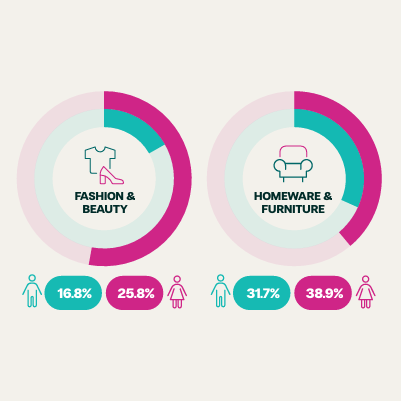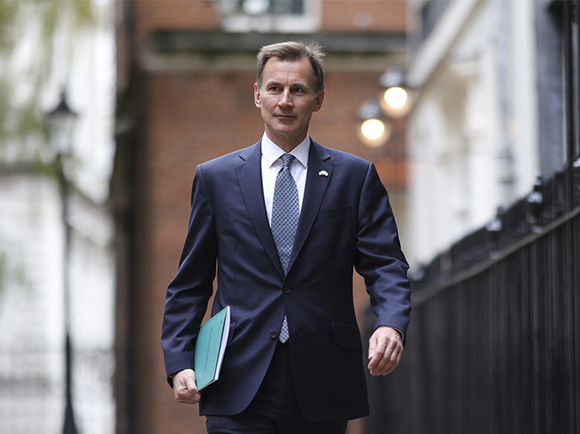Can BNPL help retailers and consumers during the cost of living crisis?

As interest rates continue to rise and the cost of living soars, it looks like we’re heading for a period of negative growth and low consumer spending – a recession, by any other name.
For retailers, this suggests a looming crisis. The question for these businesses is whether they will be able to make it through the global economic downturn unscathed.
And they are not the only victims. Consumers will also suffer. Rising household costs will prohibit people from buying the things they have been longing for. Once-in-a-lifetime purchases from engagement rings to televisions, holidays and new furniture will need to be put on hold. The recession will cause ordinary people to miss out on valuable life experiences.
Thankfully, retailers have learnt a lot from previous downturns. And while this recession may be one of the worst in recent history, there is still plenty that retailers can do now to help both their own businesses, and their consumers, to weather the storm. Technology and strategy will play a key role when it comes to supporting the retail industry.
As a provider of a whitelabel Buy Now, Pay Later (BNPL) platform ourselves, we may be biased, but having witnessed the growth of this sector during the COVID-19 pandemic, we think it will have one of the most essential roles to play in the next recession. Here’s why we think BNPL will help both retailers and customers in the months ahead.

Could Buy Now, Pay Later (BNPL) help soften the blow for retailers?
Previous recessions have forced retailers into a fight for survival. From these experiences, the sector has developed plenty of strategies to help it cope with downturns.
For instance, three of the most important lessons from the 2007-09 recession, found in this 2009 edition of the Harvard Business Review, were to: find extra headroom by looking for growth opportunities your competitors hadn’t seized upon; close the needs-offer gap by offering more of what your customers want; and lower bad costs while maximising the efficiency of good costs. In these ways, retailers could sustain profitability at lower costs.
In other words, the way for retailers to survive an economic crisis is not necessarily to cut costs, but to maximise expenditure to grow the business against the current. Indeed, the irony of an economic downturn is that it often drives innovation.
One of the popular expenditure-maximising strategies adopted during the COVID-19 pandemic was, of course, Buy Now, Pay Later (BNPL). At a time when consumers were struggling to consolidate their finances, but still had a high appetite for online shopping, BNPL offered exactly what they wanted: the opportunity to defer or spread payments over several months making the cost of big purchases more manageable. In 2020 alone, $97 billion worth of transactions were processed through BNPL. Between 2016 and 2021, the global market share of BNPL grew by around 7.5 times.
The benefit for retailers was immediately obvious. Studies showed that retailers who implemented Buy Now, Pay Later were up to three times more likely to convert browsing customers, and those who did convert were more likely to have larger baskets. Not only did basket abandonments also decrease, two-thirds of shoppers in the US said they would actually be more likely to abandon their purchase if BNPL was not an option.
This satisfies the headroom equation. Retailers who implemented BNPL during the pandemic not only accelerated growth down a new avenue, but gained a competitive advantage over other retailers who had not implemented it themselves.
BNPL also closes the needs-offer gap by giving customers more of what they want: choice in terms of payment options. To illustrate this point, Divido’s own research in July 2022 found that 83% of consumers said they had high or very high trust in the BNPL application process. 83% also said the process seemed safe or very safe, and 100% of our panel said they found the process easy.
The only question that remains then is whether BNPL justifies its cost.
The real question here is: how much does BNPL cost merchants, and does it justify this cost? The answer: it depends. Retailers pay for BNPL in any of three ways, either as a flat monthly subscription fee, a percentage value of every transaction (typically 2–8%), or as a flat fee per transaction. Whatever the means of payment, the merchant must consider this a sunk cost – Buy Now, Pay Later does not drive a direct profit. However, it does drive indirect profit by increasing the total volume of sales and the average transaction value of those sales.
Thus, in the right hands, BNPL is very much a good cost. As a cross between a technology and marketing expense, it fulfils the retailer’s need to maximise revenue at a time when every sale counts.
So, should BNPL should be considered a strategic imperative for retailers? Only if your definition of a strategic imperative is something that offers a competitive advantage, fulfils consumer demand and pays for itself in terms of long-term profitability.

Can Buy Now, Pay Later (BNPL) benefit customers too?
The next question is whether BNPL can benefit consumers.
We have written before about how the cost of living crisis will impact consumers’ household expenditure. We have also questioned whether it is morally justifiable for merchants and lenders to continue to offer loans to people at a time when their finances are already stretched thin. Our conclusion was that it is justifiable, so long as both merchants and lenders adhere to a duty of care.
We remain firmly convinced that there is a right time and a wrong time for merchants and lenders to offer Buy Now, Pay Later.
Let us start with the wrong times. These include: lending to consumers on the basis of a soft credit check or no credit check, such that the lender may be lending to someone who can’t afford to repay; lending against ‘everyday’ transactions, especially those where the repayment period of the loan outlasts the lifespan of the item(s); lending against low transaction values, which could just as easily be paid for there-and-then; and offering multiple loans to the same consumer so that repayment schedules pile up and become unmanageable.
These are tricky situations to manage, which is why we urge lenders and merchants to observe our recommendations for an ethical duty of care. But they should not take away from the fact that there are plenty of scenarios where BNPL can be considered a positive for consumers.
Picture the family whose boiler has just packed in, who need a replacement right away, but don’t have £2,000 to spend there-and-then. BNPL could help them to secure this new boiler in time for winter, allowing them to spread the payments in such a way that they can gradually pay it off while accruing no interest. Compared to the cost of a credit card, which continues to accrue interest the longer the balance goes unpaid, it is far-and-away the more cost-effective option. Better still, should the cost of the boiler go up next week, the family will be protected against that price rise.
In other words, Buy Now, Pay Later offers consumers quick access to the products and services they need, while charging them nothing more than they would have paid anyway (so long as they structure their payment plans in such a way to avoid interest), and protects them from future price rises.

Buy Now, Pay Later: easy to set up, more choice, greater profitability
The question for today is not whether the recession will happen – that seems almost set in stone – but how bad it’s going to be.
What we do know for sure is that the retail sector is going to have to tighten its belt and start implementing strategic initiatives as soon as possible.
We know from past recessions that those businesses who are quick to innovate and receptive to experimentation are not only more likely to survive, but may even thrive.
Customers may have less disposable income by the end of this year, and times will be tough. But that won’t stop them from needing and wanting to shop. As a retailer, your job is to enable these customers to do this in a way that suits their expectations. Buy Now, Pay Later proved its worth during the pandemic. If you haven’t already implemented BNPL, or if you are sceptical of your supplier going into the next recession, now is the time to make a change. Your customers will thank you – your competitors won’t.
Can retail finance be a force of good during the recession?

With sales plummeting, retail finance offers merchants an insatiable chance to drive more sales – while giving customers more options, too. Our new whitepaper reveals how merchants can use finance to start ‘lending for good’ today.
Keen to know more?








